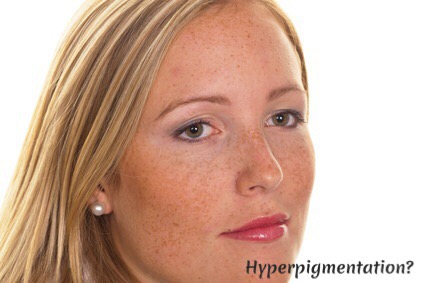Hyperpigmentation
What is Hyperpigmentation?
Hyperpigmentation occurs when the body produces too much melanin due to sun exposure, hormonal changes, injury or even heredity, and there are several types of hyperpigmentation that affect Asian and other cultures skin.Types of Hyperpigmentation
LentigosAlso known as sun spots, are light brown to dark brown spots that develop on parts of the body that are more often exposed to the sun, including the face, chest, and back of the hands. Many people refer to them as “liver spots,” but they have nothing to do with the liver. Instead, UV rays stimulate the skin’s pigment-producing cells to produce more melanin pigment.
Freckles
Small brown spots that most commonly occur on the face, especially across the nose and cheeks. They typically start in childhood, fade in the winter and typically get darker in the summer. Those with fair skin and hair and light eyes are more predisposed to getting them, though they are triggered by UV rays from the sun.
Nevus of Ota
Grayish-brown spots that most commonly appear on the cheekbones. Many people refer to them as “freckles,” but they look different under the microscope. They occur in Asian skin and may be a combination of heredity, sun exposure, and hormones. They are a different color and occur in a different distribution compared to freckles, which can be found anywhere on the body that is sun exposed.
Melasma
Dark patches on the cheeks, upper lip, forehead and/or eyebrows. It’s most common in women and can worsen during pregnancy or with birth control pills, so there is a hormonal component, although some men can get it as well. It often gets worse with sun exposure.
Post-inflammatory hyperpigmentation occurs after the skin is injured, for example from acne, after surgery or from a scratch or bug bite. It can get worse with sun exposure.
Thankfully, doctors and scientists have been studying hyperpigmentation for years. Their research has shown that some of the mainstays of anti-aging skincare, like ACSP Skincare Caviar 3-X Serum, also are effective in battling hyperpigmentation and other skin problems.
Scientists are looking at other potential spot lighteners as well, like tranexamic acid, which has been shown in small studies to reduce pigmentation and melasma by inhibiting plasmin, a substance that stimulates melanocytes, or the cells that produce melanin.
But until they find a miracle cure, do your part and use sunblock every single day, we recommend ACSP Shop Serum Caviar Day Block SPF50 PA+++, avoid heat, because it may aggravate melasma, and avoid irritating your skin since irritation can lead to post-inflammatory pigmentation.
The good news is that many of the ingredients that fight hyperpigmentation also happen to build collagen, fight free radicals, and offer other anti-aging benefits. So lighten up with these power hitters.



